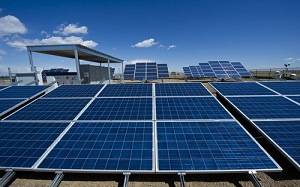Report: Distributed photovoltaics will nearly triple to $154 billion by 2015
 Today’s solar project headlines are dominated by large-scale solar projects, projects spread across wide swaths of desert, or tracts of farmland. But the majority of solar’s, particularly photovoltaic’s, rise in popularity is due primarily to distributed generation projects, and it looks like that may play a bigger role in its future, according to a new report, “Distributed Solar Energy Generation” from Pike Research.
Today’s solar project headlines are dominated by large-scale solar projects, projects spread across wide swaths of desert, or tracts of farmland. But the majority of solar’s, particularly photovoltaic’s, rise in popularity is due primarily to distributed generation projects, and it looks like that may play a bigger role in its future, according to a new report, “Distributed Solar Energy Generation” from Pike Research.
The report found that the international market for distributed solar generation is set to grow from $66 billion in 2010 to more than $154 billion annually by 2015.
That’s equivalent to a compound annual growth rate of 18 percent, according to the report. During the same period the amount of installed distributed generation is set to grow from 9.5 gigawatts to more than 15 gigawatts. For the purpose of the report, distributed generation referred to systems generally under 20 megawatts in size that service a load onsite and feeds energy back to the grid, whereas utility-scale solar feeds the grid, said Pike Research Senior Analyst Peter Asmus.
Europe will continue to be the stronghold for distributed solar in the near future, but China and India are strong potential markets, according to the report. Growing economies and high percentages of population without access to reliable electricity represent large market opportunities.
“In China, even in their rural areas, they are pretty much grid-connected, unlike India,” Asmus said.
While they like to do things in China big, both China and India are likely to look to distributed generation, particularly as they build out their manufacturing and high-tech industries.
“I could imagine in China you could be seeing it in terms of reliability. With utility-scale PV, you’re still out of luck if the grid goes down. Distributed generation adds reliability,” Asmus said.
For the foreseeable future, at least in the U.S., utility-scale solar will dominate, according to Asmus.
He projected that 10 gigawatts would be installed in the U.S. in 2016 alone. That’s partly because it’s harder to raise capital for distributed generation projects with the ailing economy, among other factors.
“I think we’re seeing a shift to utility scale because of prices falling,” Asmus said.
But he anticipated that, in the long-run, distributed generation will regain dominance.
Image courtesy of NREL.



